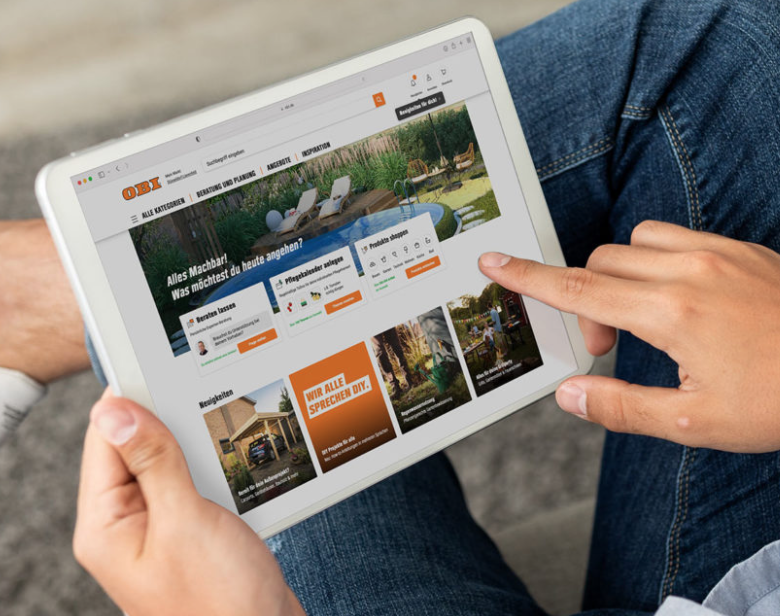The elusive goal of giving personal service to customers in a mass-market retail setting was the subject for a recent Internet Retailing/New Voice Media webinar, Customer experience – making it personal. Our speakers were Martin Hill Wilson, chief executive of Brainfood, and Tim Pickard, chief strategist of NewVoiceMedia. Questions from the audience were fielded by NewVoiceMedia marketing manager Emma Samuel throughout the event.
Retail and the way that customers experience it are transforming rapidly, Martin Hill Wilson, chief executive of Brainfood, told a recent Internet Retailing/NewVoiceMedia webinar. “We’re empowered to find out a great deal of what’s available to us, what the options look like, what we want before we go to an organisation to actually purchase,” he said.
But organisations are finding the task of moving beyond their legacy silos and divisions much more difficult. The process of aligning those two opposing pressures is ongoing. And while that’s in process, retailers must also contend with fresh changes, driven by evolving technology. Just as traders are still working to break down the barriers within their business and link up their channels, new challenges are still emerging, and fast. Two years ago, for example, online shopping from a smart mobile device accounted for around 1% of UK online sales. Now 20% of sales come over such devices, and retailers report that an even newer technology, the iPad, is behind more than 90% of those sales.
Customers are more expectant – wanting everything immediately, and everywhere – and also want to be able to move from screen to screen, from mobile to laptop, in interacting with retailers. Shoppers might choose items from their smartphone, putting them in their basket, before buying from their tablet in the evening. Synchronisation of baskets is key to boosting sales – and failure to synchronise means more customer effort. Hill Wilson cited US retailer ModCloth, which found that logged-in shoppers who visited their site from a number of devices were 2.5 times more likely to buy.
“We want to be very rapidly getting to a point where with a single log on we have synchronization of data across those devices,” said Hill Wilson. “And as a principle that also should apply across channels, if we’re in an ecommerce environment, a call centre environment or a face-to-face environment.”
Challenges faced by retailers now include showrooming – where customers browse the store before buying over the phone. Some 20% now buy instore, according to Intersperience, while 30% then buy elsewhere. But this is just one example of how customers are bringing digital into the store. Hill Wilson cited another survey that showed 71% of consumers now wanted in-store digital access as the online and offline move closer together. Respondents to a Cisco global survey that asked what in-store concepts would be of interest cited automated pick-up options such as Amazon lockers (53%), product selectors that show the full product range (53%), personal mobile shopping that allows, for example, shoppers to use their own devices in store with functions such as QR codes, (50%) and design centres (49%).
As stores turn into extensions of the online operations, they are likely to become locations for web return centres, pickup locations, shipping outlets and payment booths as well as, potentially, drive-through customer services. All of this gives the opportunity to take the call centre out of its traditional home and into the retail environment.
This has implications for design: Lego block-type operations must be simple and fit together easily. At the same time customer data and service will probably become embedded as the digital and physical retailing move ever closer together. “To keep it simple, reusable and easy to use then cloud, of whatever form, is actually perfectly suitable for that kind of design and innovation,” said Hill Wilson.
Big data is also starting to allow retailers to offer their customer personalised offers and promotions, as well as the ability to create and manage personalised list. In-store service can also be driven by access to preferences, likes, dislikes and past purchases. Currently being trialled are communications that combine data with the customer experience. For example, a mobile message can let customers know when an out-of-stock item they were interested in becomes available. In-store terminals are being used to share pictures on social networks to garner friends’ opinions on a potential purchase. And KLM’s Meet and Seat uses social information to make in-flight seating suggestions.
In a poll, member of the webinar audience were asked for their top 2013 priorities. Fifty-four per cent named the 360 degree view of the customer, 34% opted for online/store alignment, 36% for customised offers and 23% for multi-screen synchronization.
Hill Wilson then touched on how personalised services can be enabled in the contact centre setting. “It’s to do with recognising customers’ circumstances and the personal situation they find themselves in. It’s then to show we know what your circumstances are. Letting them know we know is a key part of providing a very powerful experience.”
Tim Pickard, chief strategist at NewVoiceMedia, then took up the theme, offering practical examples of how contact centre personalisation can work. For example, when a high-value customer calls during peak time, automated messaging can let them know they are being prioritised for immediate attention.
Alternatively, a customer who has made repeated contact in a short time might be met with an automated message offering the services of a customer service troubleshooter. “By tying web analytics together with our CRM and CTI (computer telephony integration) we can understand that and say we think you’ve been having a problem here and that there’s an opportunity to help you with your purchase,” said Pickard. “We tell the customer that before routing the call to help with their purchase.”
Other situations might include calls made when the mobile call dropped or a conversation was not completed. Automated messaging might lead to an outbound call asking if the customer would like to continue the conversation.
New technical standards, Web Real Time, will soon see voice embedded in the browser, says Hill Wilson. “The mash up between online and call centre will get even closer.”
Hill Wilson summed up: “In an omnichannel world, the bit you’ve probably been noticing is the relationship between online, digital, ecommerce and physical retail. I’d like to add in another component here. What we’ve looked at now is the relationship between the customer service bit and the online bit. That’s another aspect of tying together your overall omnichannel capability.”
The question and answer session ranged from the use of virtual shopping walls in South Korea to best approaches to using personal data.
To hear the webinar for yourself, to view the accompanying slides and hear the question and answer session, visit the NewVoiceMedia webinar page here. on the Internet Retailing page here. Find out more about Internet Retailing webinars here.








